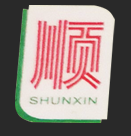If classified according to the thickness of the material, it can be divided into
1, ordinary thin blister thickness of 0.14 ~ 5.0 mm - mainly use PVC, PP, PS (HIPS), PET (including APET, PETG), PE, BOPS, and recycled paper such as the effect of various materials and folding, folded in half, thirty percent, cylinder, folding box, box, high frequency and other non thermal forming blister products, widely used in food, medicine, electronics, toys, computers, daily necessities, cosmetics and mechanical hardware industry, etc.
2, special thick blister thickness of 0.14 ~ 8.0 mm - mainly use PVC, PP, PS (HIPS), PET (including APET, PETG), PE, ABS, PC and PMMA, etc all kinds of material and the effect of injection molding type blister products note PVC water content detection techniques such as the main products are refrigerator inner, advertising light boxes, product display, PET cage, chassis, after the rear projection TV shell, and a variety of mechanical panels, etc., can replace plastic injection products, low mould cost (only 1/20 of the injection mold), short production cycle, Mold development time is short (usually only 3-5 days) and other features.
The reason why we don't classify the thickness of materials is that there are some differences between ordinary thin and special thick and plastic products. However, PVC, PP, PS and PET all have a place in these two kinds of plastic products. They are the "four Kings of heaven" in the family of materials used for plastic products.

Blow molding is also called hollow blow molding, a rapidly developing plastic processing method. After extrusion or injection molding of thermoplastic resin, the tube-like plastic blank is placed in the open mold while hot (or heated to a softening state). After the mold is closed, compressed air is immediately injected into the mold to make the plastic blank swell and stick to the inner wall of the mold. The manufacturing process of blown film is similar to that of hollow products in principle, but it does not use moulds. From the perspective of plastic processing technology classification, the molding process of blown film is usually included in extrusion. Thick - chip blister production was introduced to produce low - density polyethylene vials during world war ii. In the late 1950s, with the birth of high density polyethylene and the development of blow molding machines, blow molding technology has been widely used. The volume of hollow vessels can reach thousands of liters, and some production has been controlled by computer. The plastics suitable for blow molding include polyethylene, polyvinyl chloride, polypropylene, polyester, etc.
Extrusion blow molding is a method of manufacturing hollow thermoplastic parts. The widely used objects for blow molding are bottles, buckets, cans and boxes, as well as containers for all packaged foods, beverages, cosmetics, medicines and daily necessities. Large blow-moulding containers are commonly used in the packaging of chemical products, lubricants and bulk materials. Other blow molding products include balls, corrugated tubes and toys. For the auto industry, the fuel tanks, car shock absorbers, seat backs, center brackets, armrests and headrest covers are blow-molded. For machine and furniture manufacturing, blow molding parts may be shells, door frames, shelves, POTS, or boxes with an open surface.
The most common type of polymer is the high density polyethylene, which is usually found in most milk. Other polyolefins are often processed by blow molding. Styrene polymers, polyvinyl chloride, polyester, polyurethane, polycarbonate and other thermoplastic plastics can also be used for blow molding, according to their use. Engineering plastics have recently become widely accepted in the automotive industry. Material selection is based on mechanical strength, weather resistance, electrical, optical and other properties.
Elastomeric polymer blending is defined as a process by which the polymer or polymer system is upgraded through melt mixing. Mixing processes range from the addition of a single additive to a variety of additive treatments, polymer alloys and reactive mixtures. It is estimated that one-third of polymer production in the United States goes through a mix. Mix ingredients can be customized according to the performance requirements of the final application. Hybrid products have mixed properties, such as high gloss and excellent impact strength, or precision molding and good stiffness.

contacts:yanmei
tel:159 0765 2175
wechat:159 0765 2175
Q Q:525377158
Email:zsshunxin@vip.126.com
web:www.zsshunxin.com

